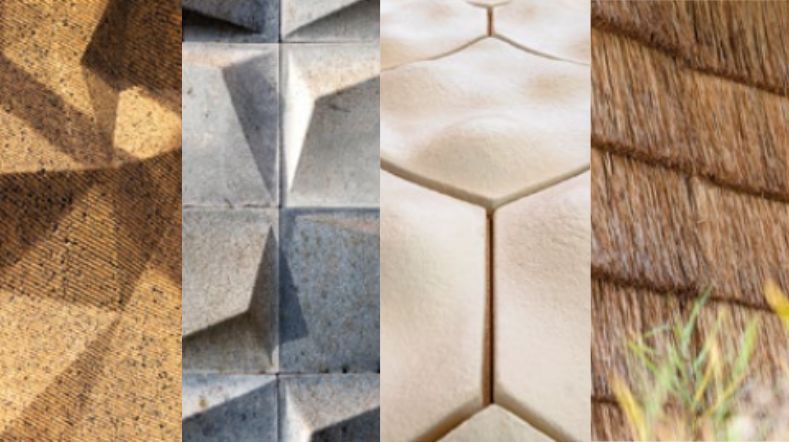
Making homes sustainable: knowledge breakthroughs and new opportunities thanks to AI
Not much progress is being made in the Netherlands when it comes to making homes sustainable. Many building owners are still trying to find how best to achieve this. At the same time, providers of sustainability solutions are having trouble scaling up. This impasse has not gone unnoticed by TNO, so they are using artificial intelligence to work out on a case-by-case basis which solutions are best suited to which homes.
“You can discuss it till you’re blue in the face, but assuming that one-third of all CO₂ emissions originate one way or another from built-up areas, then it quickly becomes clear that there’s a long way to go,” stresses Rogier Donkervoort.
Together with his TNO colleague Stan Klerks, he is working on a system-based solution that is intended to make easier the process of making homes in the Netherlands sustainable. “It’s important that sustainability solutions can be applied on a large scale,” Rogier continues. “It could help the Netherlands reach its CO₂ targets in the government climate agreement ('Klimaatakkoord’).”
Different approach to making homes sustainable
“Obviously, we’re not the only ones looking at how we could accelerate the process of making homes sustainable,” says Stan. “But what makes us stand out is the difference in our approach. The government and the private sector attempt mostly to create descriptive clusters. They make sub-divisions according to type of dwelling and year of construction, and then sub-divide them even more. A logical method in itself, and one that Rogier and I can only commend, but even in these carefully composed clusters, there are still many varying factors at play. When making a specific home sustainable, it’s therefore often necessary to use tailor-made specifications.”
“Thanks to a special algorithm, we can now suddenly see interconnections that we could never have thought of ourselves”
Searching for specialists
This is a complex subject that involves so many different factors that it is impossible for anyone to have a clear overview. This obviously lends itself to a solution based on artificial intelligence. At the start of 2019, Stan and Rogier therefore launched a search for specialists with experience in this field.
Fortunately, TNO has its own in-house expertise in this area as well. The team was expanded to include Pim van den Helm, a colleague who knows exactly how to collect datasets, and Neha Sree Thuraka, who works at TNO as an AI specialist.
Interesting new insights
“Based on existing data, we can use artificial intelligence to help us better assess whether a particular solution is suitable for use in specific homes,” explains Stan. “We now use AI to recognise patterns. This involves working with datasets with 80 characteristics, in total. They go way beyond the year of construction, surface area, energy label, and estimated energy consumption.
For example, we also include the size of the family in each home and the various dimensions of the property. Thanks to a special algorithm, we can now suddenly see interconnections that we could never have thought of ourselves. The fact that the size of a home could play a role in determining the choice of a certain renovation solution, for example – even if, technically speaking, it makes no difference whether it concerns a small or large-sized dwelling. Very useful to know, though, because we can take it into consideration in the future. As can our system, because it’s a learning algorithm.”
Better and more accurate
“We’ve been working on this for around two years and are still in the test phase. But because we’re constantly enhancing it, it will get better and better and increasingly accurate,” expects Rogier. “Given that making homes sustainable is a major topic nowadays, we’re regularly asked whether our system could not be used in a more targeted manner. However, it’s still too early to take a specific home as a starting point and to look for a suitable renovation concept to go with it. So, we’re firstly focusing on the solutions. And it’s only when our system is able to make reliable predictions in that area that it will be time to turn things around and make the housing stock the starting point.”
“Using artificial data, we’re better able to assess whether a particular solution is suitable for use in specific homes”
Accelerating sustainability
“Indeed, a dose of expectation management would be useful,” agrees Stan. “But it’s very promising to see what we can do with the system, even in the test phase. Based on data that is entered, the algorithm identifies aspects that provide fresh insights. That is truly wonderful.”
Rogier also believes the system adds a special dimension. “Because the algorithm enables us to estimate how many homes a specific solution is suitable for, the providers of the solution can plan their investments and production lines accordingly. I imagine such information would also be of interest to their financiers as well. In addition, suppliers can attract business in a more targeted manner, while homeowners too know where they stand. All of this could help speed up the process of making homes sustainable. That, at least, is what we’re expecting.”
Data that enhances the system
“We’ve not yet reached the stage where you can take out a subscription on our system,” clarifies Stan. “But we do hope that parties who are working on similar systems will give us a call. It would help us a lot. That’s because their data could enhance our system while they, in turn, would benefit from the knowledge that that produces.”
Want to know more?
If you would like to know more about the algorithm that will make homes more sustainable, or if you are working on a similar project, please get in touch with Rogier Donkervoort.
Get inspired
Building materials


Western North Brabant becomes hotspot for biobased building blocks for the construction industry


Pioneering sustainable concrete


Natural stone

How ‘smart thermochromic glass’ saves energy in homes


